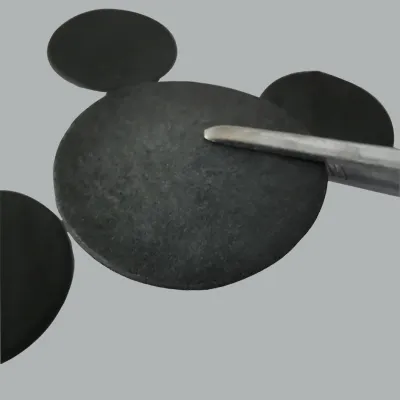
For spherical thermally conductive fillers, although the thermal conduction paths are not easy to form, they are relatively easy to accumulate, especially the smaller particles fill the gaps between the larger particles, forming a denser accumulation, thus forming more thermal conduction paths , so as to prepare composite materials with higher thermal conductivity.
Due to a certain length-to-diameter ratio (long strip, filament), carbon fiber is easier to form a heat conduction path, and has higher strength. Adding it can improve the heat conduction and mechanical properties of rubber. However, fibers, whiskers, and dendritic thermally conductive fillers all have fixed thermally conductive orientations. In order to obtain higher thermal conductivity and filling capacity, the mixing process and the molding process of the gasket need to be specially designed.
At present, the highest thermal conductivity of our carbon fiber thermal pad CSF series has reached 45W/mK, while the thermal conductivity of the more mature high thermal conductive silicone pads on the market is 12W/mK, and the CSF series has a lower density than traditional thermal conductive silicone pads. , low precipitation, non-sticky, better mechanical properties and other advantages. Provide high-reliability heat dissipation protection for portable smart devices, high-end electronic products, high-heating power components, etc.

 English
English
 usheenthermal
usheenthermal



